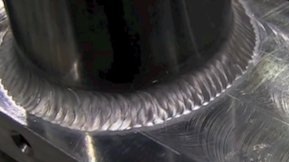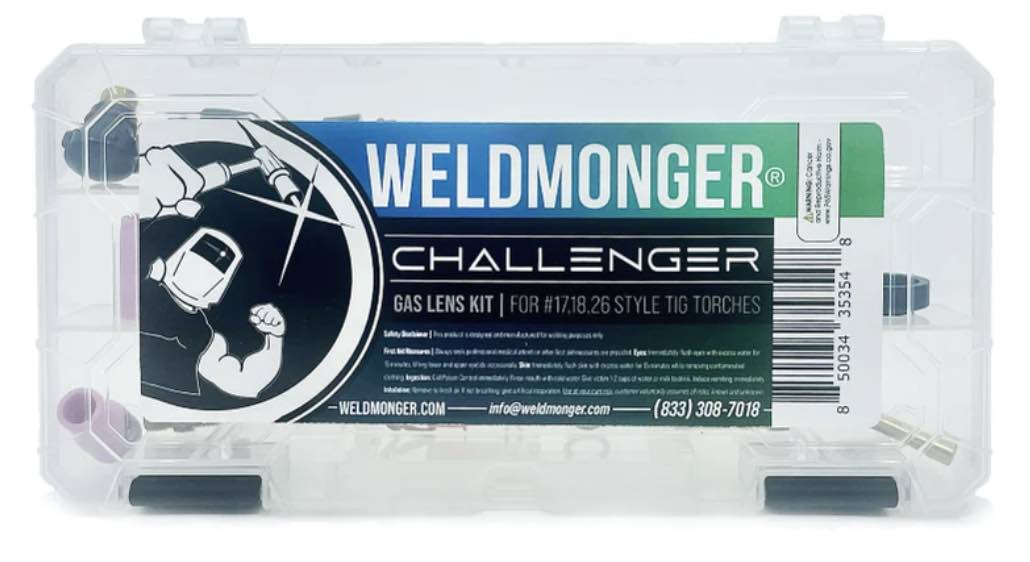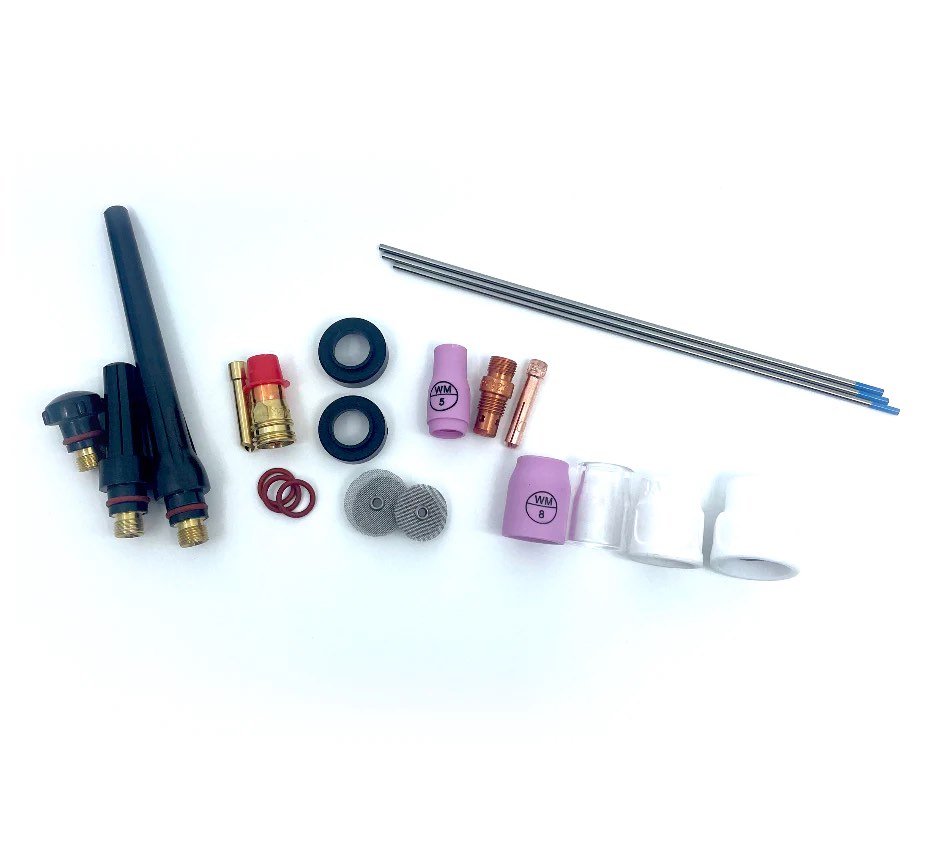Welding 4140 and Other Tips
scroll down for videos on welding 4140
"A black oxide finish makes 4140 steel look nice "

...Introducing the New WeldMonger Challenger TIG kit that includes the most frequently used Cups.
Tig welding 4140...
I had a few jobs come in the shop the other day that were made out of 4140.
4140 is a frequent choice for aircraft tooling mainly because it can be heat treated for much higher hardness than plain steel, and because its more dimensionally stable than cold rolled steel.
This particular job was a crows foot that is usually used to fit in tight places when using a torque wrench.
Both strength and hardness were important but another consideration was making sure the black oxide finish looked ok when the part was shipped.
Normally, for a job like this, if given the choice, I might choose to use a 309 stainless rod because it is very crack resistant and it looks good.
But because the drawing called for er70s2, thats what i used.
Welding 4140 is a lot like welding 4130 which is a lot like welding plain old steel.
Except for being more crack sensitive and therefore needing a preheat before welding on certain applications, the puddle looks very much the same as welding plain carbon steel...
thats because the composition is so similar.
4130 and 4140 are low alloy steels. They are also known as chromoly steels because they both contain small amounts of chromium and molybdenum.
| 4140 | 4130 |
| C 0.38-0.43
Mn 0.75-1.00 P 0.035 (max) S 0.04 (max) Si 0.15-0.30 Cr 0.80-1.10 Mo 0.15-0.25 | C 0.28-0.33
Mn 0.40-0.60 P 0.035 (max) S 0.04 (max) Si 0.15-0.30 Cr 0.80-1.10 Mo 0.15-0.25 |
The more carbon a steel has, the more it can be hardened by heat treatment. Take tool steels for example...or something like 52100 ball bearing steel...
We all know how hard ball bearings are. Well 52100 ball bearing steel is very similar to 4140 steel also, but it has a lot more carbon.
Have you ever tried to weld a ball bearing to something. I have.
just for kicks, I welded a ball bearing to the end of a rod as a slide hammer stop. I guess I was bored that day.
One stroke of the slide hammer and the weld at the ball bearing shattered and the bearing went across the shop.
Thats because of carbon...ball bearings have a lot of carbon.
the table below compares the carbon content of 4140 steel to 52100 ball bearing steel. 4140 contains roughly 0.4% carbon while 52100 contains roughly 1% ...thats 1 full percent.
| 4140 | 52100 bearing steel |
| C 0.38-0.43
Mn 0.75-1.00 P 0.035 (max) S 0.04 (max) Si 0.15-0.30 Cr 0.80-1.10 Mo 0.15-0.25 | C 0.98-1.10
Mn 0.25-0.45 P 0.025 max S 0.015 max Si 0.15-0.35 Cr 1.40-1.60 Mo --------- |
For tig welding stuff like thin 4130 tubing, a single pass is usually the ticket without any weave action.
But for thicker steel parts, like the 4140 tooling parts that showed up the other day, sometimes a slight weave is in order.
Generally it is good practice to dip the rod in and out of the puddle to ensure the front edge of the puddle is wetting in properly. But when the metal is clean, the amperage is right, and the arc is tight, leaving the rod in the puddle works too.
Welding 4140 to stainless
for welding 4140 steel to 303 stainless, I chose a 309 filler rod.
309 stainless filler rods are designed to weld carbon steel to stainless steel.
Welding 303 free machining stainless is tricky. When welding 303 to itself, I have found 308L to be the best choice, but for welding 4140 to 303 stainless, 309 stainless, 312 stainless, or hastelloy W are all good choices.
Since hastelloy W has become so expensive, 309 stainless filler was used to weld the 4130 to 303.
welding free machining 303 stainless is not even recommended for some applications but this particular part was more like an alignment gauge and was never going to be loaded at all.
It helps to know as much about the part you are welding as possible.
exit welding 4140 and return to main TIG welding page




















